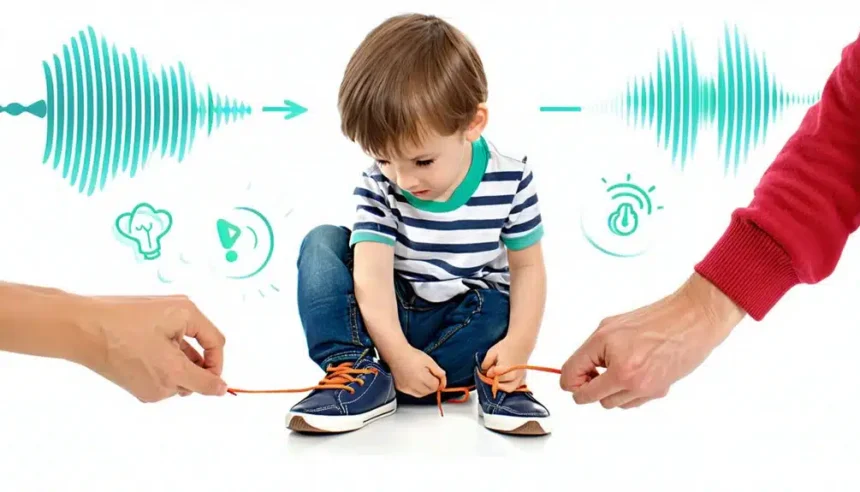Autism affects how children perceive and respond to the world around them, and sensory processing challenges are a common part of that experience. These issues can influence how a child reacts to sounds, textures, lights, or even movement, often making everyday environments overwhelming. Understanding the different types of sensory processing difficulties can help parents, educators, and caregivers provide better support. Here are four types of sensory processing issues seen in children with autism:
1. Hypersensitivity (Over-Responsiveness)
Hypersensitivity occurs when a child’s nervous system overreacts to sensory input. Children with this type of sensory processing issue, often seen in those with autism, find everyday sensations overwhelming or painful. They might cover their ears during loud noises, refuse to wear certain clothing textures, or become distressed in bright environments.
Common signs of hypersensitivity include avoiding messy activities, crying during hair washing, or becoming upset in crowded spaces. These children also show strong reactions to unexpected touches or sounds. Parents often notice their child withdrawing from activities that involve intense sensory experiences. A hypersensitive child may refuse to eat foods with certain textures or avoid playground equipment. School environments can become challenging when fluorescent lights or classroom noise feel unbearable.
2. Hyposensitivity (Under-Responsiveness)
Hyposensitivity is the opposite end of the spectrum. Children with this processing pattern have a reduced response to sensory input. They do not notice or respond to sensory information that would catch attention. These children often appear less aware of their surroundings and miss key social or environmental cues.
Signs of hyposensitivity include not responding when their name is called, appearing unaware of injuries, or showing little reaction to temperature changes. Some children may not notice when their hands or face are dirty. They also have difficulty recognizing when they need to use the bathroom. This can create safety concerns. A child may not notice hot surfaces, sharp objects, or other potential hazards.
3. Sensory Seeking Behaviors
Some children with autism actively seek out intense sensory experiences. This pattern involves constantly searching for sensory input to help regulate their nervous system. These children often appear restless and engage in repetitive behaviors that provide sensory feedback.
Sensory seeking behaviors include spinning, jumping, or rocking repeatedly. Children may seek out loud noises, bright lights, or intense physical pressure. They may enjoy crashing into furniture, hugging tightly, or chewing on non-food items. Some children prefer spicy or strongly flavored foods.
While these behaviors serve a purpose for the child’s nervous system, they can interfere with learning and social interactions. Teachers and parents may find it challenging to redirect attention when a child is focused on seeking sensory input. Safety can also become a concern with intense seeking behaviors.
4. Sensory Discrimination Challenges
Sensory discrimination is the ability to distinguish between different types of sensory information. Children with discrimination difficulties struggle to interpret and organize sensory input effectively. They may have trouble identifying objects by touch alone or distinguishing between similar sounds.
These challenges can affect fine motor skills, body awareness, and spatial understanding. A child may have difficulty finding items in a backpack without looking or struggle to navigate crowded spaces. They may also have trouble with activities requiring precise movements, such as writing or buttoning clothes.
Get Dedicated Support for Autism
Recognizing sensory processing patterns in children with autism helps create supportive environments. Each child’s sensory profile is unique, requiring individualized approaches to address their specific needs. Professional evaluation can provide detailed insights into a child’s sensory processing patterns. For signs of sensory processing difficulties in your child, contact a trusted provider near you for a comprehensive evaluation and dedicated support.










